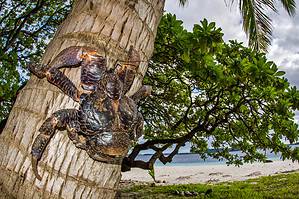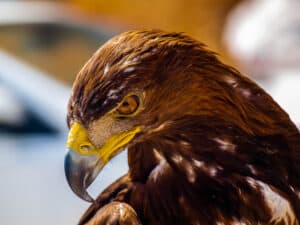Technically speaking, an invertebrate is any animal that lacks a spine or backbone but generally lacks bones entirely. They make up 95% of all animal species roaming the Earth today and vary widely in size, shape, color, and lifestyle. Below, we’ll take an in-depth look at 11 examples of animals with no bones, some interesting facts about them, and why they’re so incredible.
1. Snails and Slugs
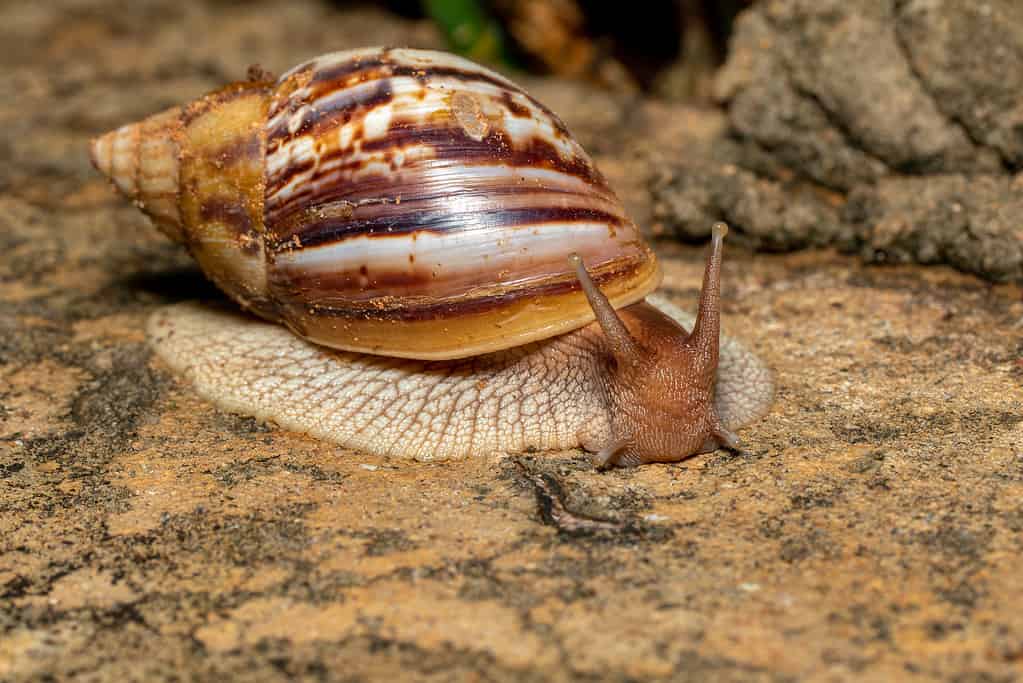
The
giant African land snail
is one of the largest gastropods, averaging 8+ inches long.
©Artush/iStock via Getty Images
Collectively known as gastropods, the first animals with no bones we’ll take a look at are snails and slugs. They make up around 80,000 unique species, making them almost as numerous as insects worldwide as far as diversity goes. They live in nearly every corner of the Earth in habitats ranging from the ocean’s deepest depths to the world’s tallest mountains.
Their taxonomic name, “Gastropoda,” is Latin and means “stomach foot,” referring to the fact that anatomically, these animals’ innards rest just above their single, massive fleshy foot, which they use to get from place to place. While snails generally have an external shell, slugs lack them entirely. Additionally, within this group are semi-slugs, which have shells they can only partially retreat into but are not entirely like that of a snail.
2. Insects

Insects like
bees
lack internal bones but have chitinous exoskeletons to protect their bodies.
©nnorozoff/iStock via Getty Images
The largest group of invertebrates are the insects, which consist of more than one million unique species! While these animals technically have an external skeleton made of chitin, they lack entirely internal bones.
Taxonomically, these animals have bodies divided into three segments: a head, thorax, and abdomen. Other unique traits include three pairs of legs, large, well-developed compound eyes, and a pair of sensory organs called antennae. Most insects also undergo a metamorphosis consisting of at least three or four distinct life stages.
Insects are incredibly resilient, diverse animals that vary widely in size and habitat. Some can fly, while others are partially aquatic. Although most are generally solitary, many insects, such as bees and ants, live in advanced colonies and have incredibly complex means of communicating with one another within these groups.
3. Bivalves (Clams, Oysters, Etc.)
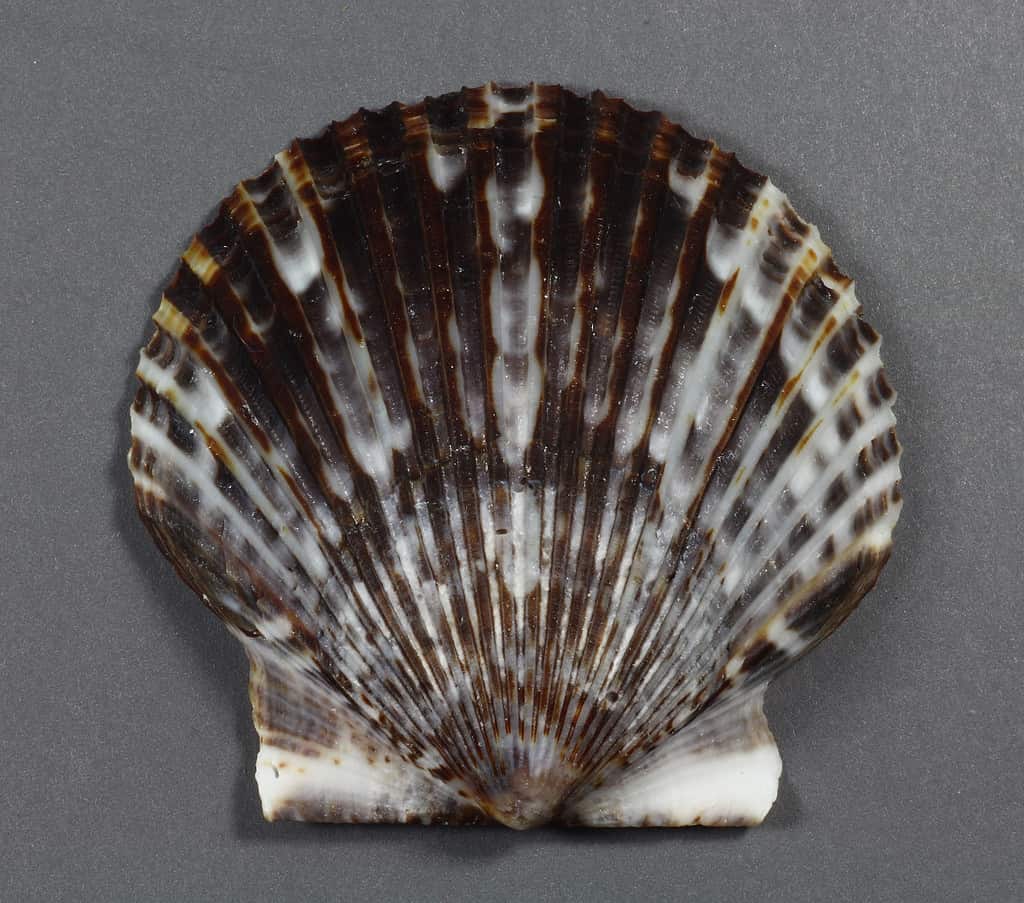
Some bivalves like this Atlantic bay scallop can swim.
©iStock.com/mccluremr
Collectively, the bivalves are a large group of animals consisting of clams, oysters, mussels, scallops, cockles, and several other smaller families. These animals’ most prominent characteristic is their soft, flat bodies encased in a hard, protective shell. This shell has two hinges, or valves, hence the Latin name Bivalvia. Around 20,000 unique species of bivalves exist worldwide.
The anatomy of a bivalve is as fascinating as it is confusing, as they lack heads and bones. Most bivalves’ shells are made of calcium carbonate and help keep the animal inside safe from predators and the elements. While some prefer to attach themselves to hard surfaces, others bury their bodies in sand or silt. Additionally, some are capable of burrowing into hard materials like wood. A handful of species, such as the scallop, can even swim!
4. Arachnids (Spiders, Scorpions, Ticks, Etc.)
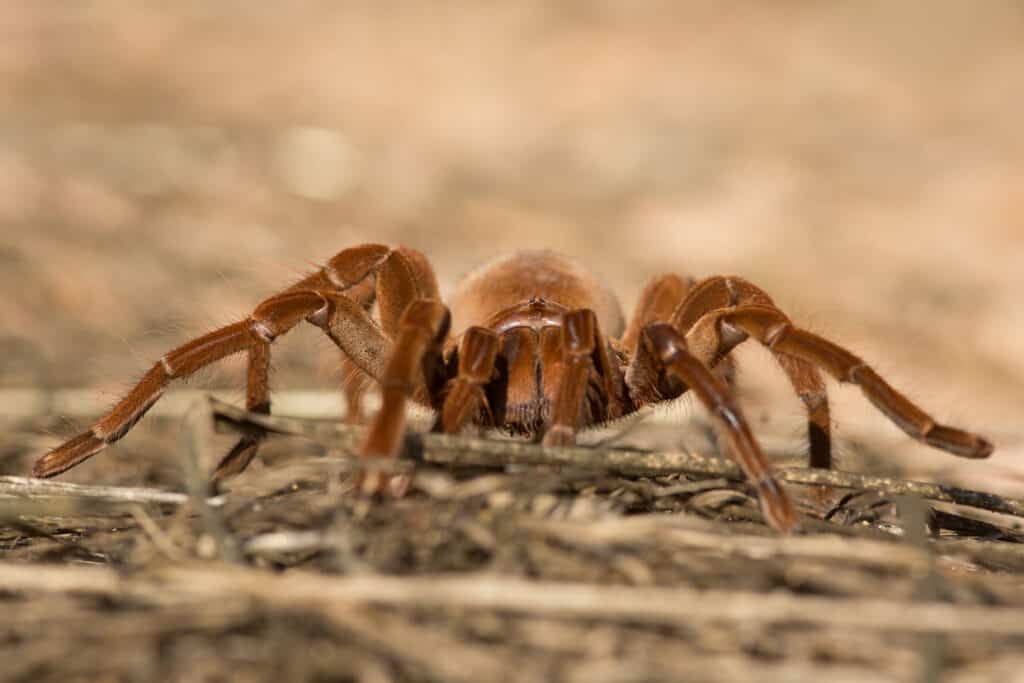
The world’s largest arachnid is the massive
Goliath birdeater tarantula
. It can weigh over 6 ounces.
©Milan Zygmunt/Shutterstock.com
The next group of animals without bones we’ll look at here are the arachnids, a rather eclectic bunch that consists of spiders, scorpions, ticks, mites, and more. Although they look similar to insects, they are distinct in many ways.
For starters, rather than the three-segment body plan of insects, these animals’ bodies consist of two main parts: the cephalothorax (as in a fused head and thorax) and an abdomen. Their limbs are also positioned differently: four pairs of legs are attached to their cephalothorax rather than three pairs. Additionally, rather than undergoing distinct stages of metamorphosis, arachnids maintain the same adult appearance throughout their lives.
More than 100,000 unique species of arachnids exist, with the largest living species being the Goliath birdeater tarantula. It can reach a whopping 11 inches in length!
5. Corals
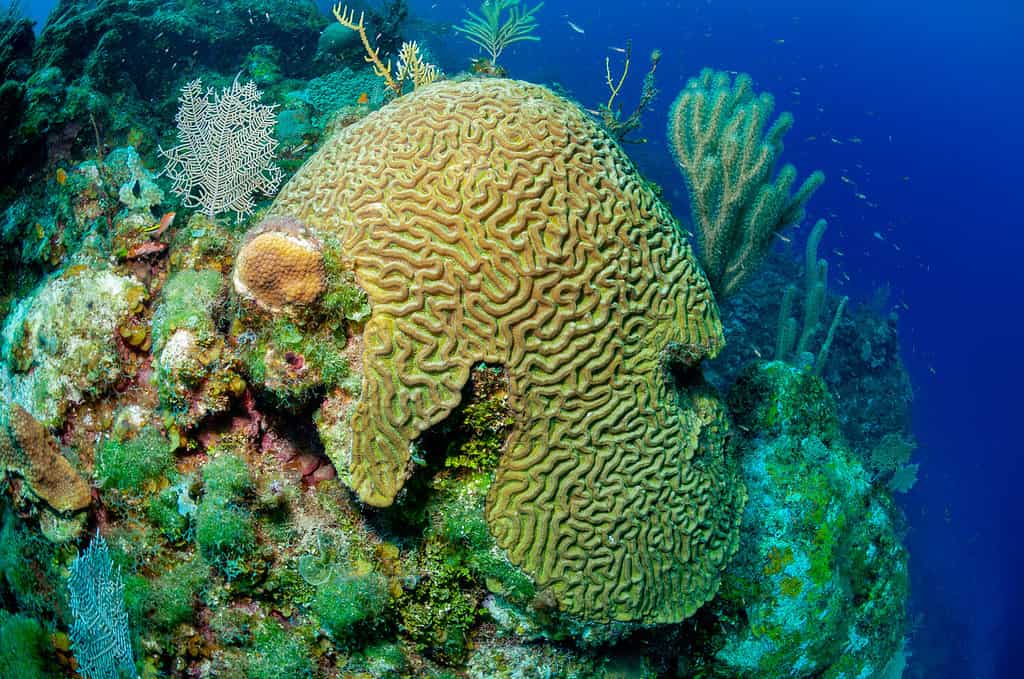
Corals like this brain coral can grow quite large, often several feet wide.
©Jesus Cobaleda/Shutterstock.com
Consisting of over 2,000 unique species, corals are a group that also includes sea anemones and soft and hard corals. As adults, they attach themselves to the ocean floor, but their larval forms can move from place to place. They are incredibly diverse and vary in size from as little as less than 0.5 centimeters to massive colonies that can reach several feet wide.
Corals are also quite diverse in color, shape, and overall appearance, creating a rainbow of bizarre, alien-like structures across the ocean floor. They technically fall under the taxonomic phylum Cnidaria, meaning they are related to jellyfish, which we’ll also touch on below, as they similarly lack bones!
6. Crustaceans
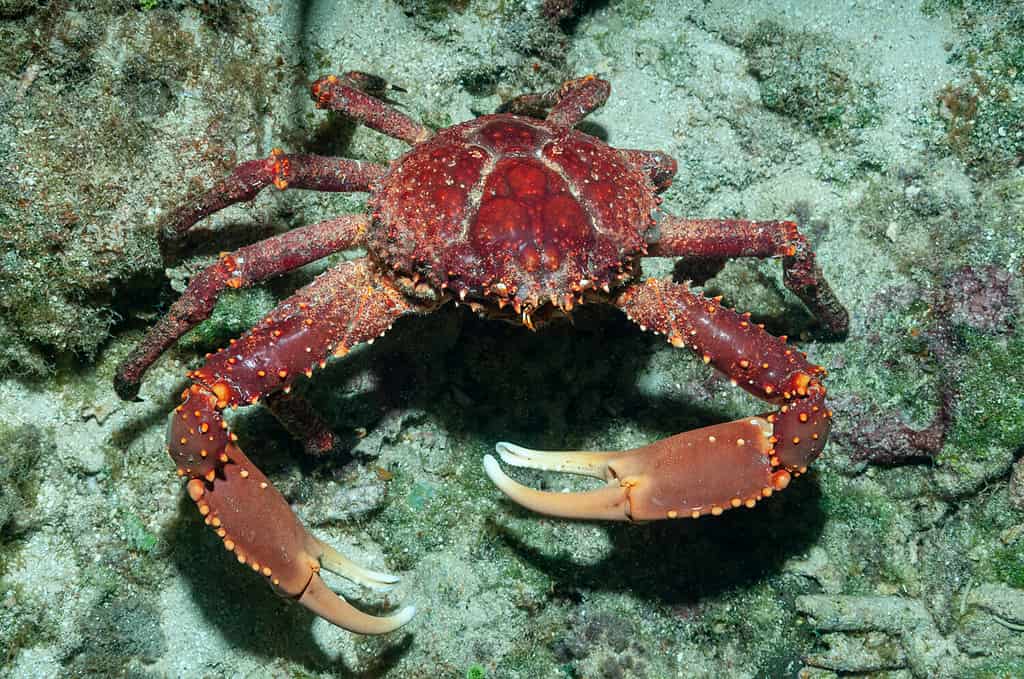
Spider crabs
like this West Indian spider crab can grow to be around 7 inches in length.
©Jesus Cobaleda/Shutterstock.com
Crustaceans comprise a massive group of more than 45,000 distinct species within the invertebrates. They include animals such as crabs, lobsters, shrimp, krill, isopods, barnacles, and many more. Their main traits are their hard, external skeletons (similar to that of insects), their paired, jointed limbs, and three main body sections: a head, thorax, and abdomen.
In addition to varying widely in size and shape, crustaceans boast many lifestyles and habitats. Though the majority of crustaceans are aquatic, some are terrestrial, such as the woodlouse. Humans commonly harvest many as food, though others are parasitic.
7. Worms
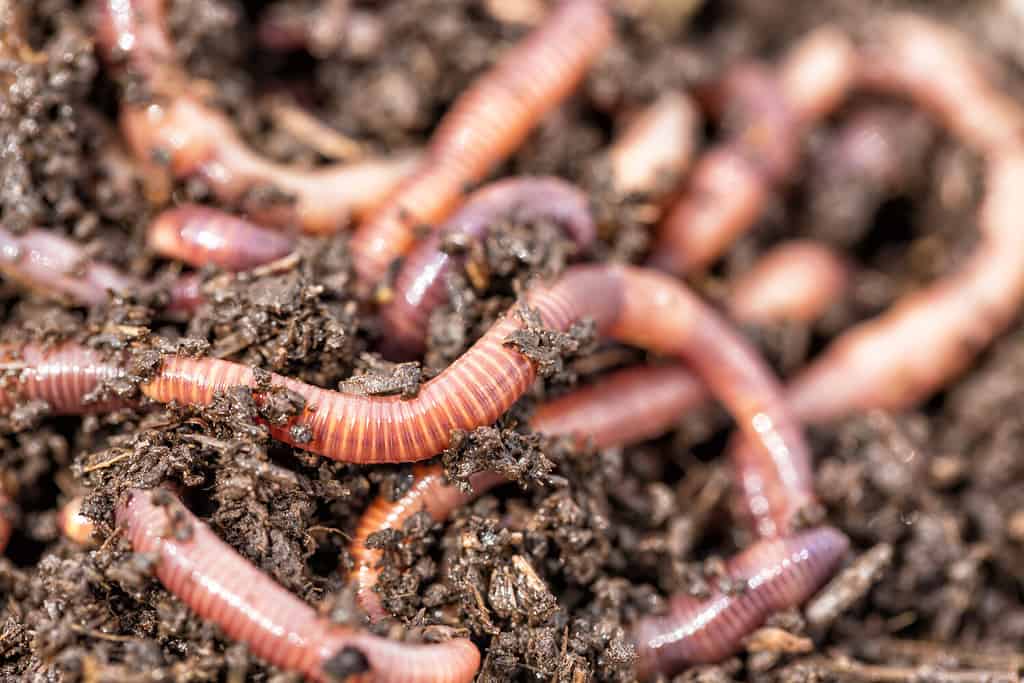
Some of the most well-known and widespread worms are
earthworms
, a type of segmented worm or annelid.
©Nick N A/Shutterstock.com
One of the most diverse groups of animals with no bones is the worms, which consist of many closely related and unrelated taxonomic groups. They can be aquatic or terrestrial, parasitic or free-living, and they range in size from tiny roundworms just micrometers in length to enormous giant earthworms reaching an astonishing 20+ feet long.
Although worms used to all fall under a single taxonomic grouping, today, we better understand them as spanning various families and phylums. They include segmented worms, annelids, roundworms and nematodes, flatworms, ribbon worms, and even the larvae of certain insects like maggots and grubs. They’re a complicated group taxonomically and as unique as they are fascinating.
8. Nautilus
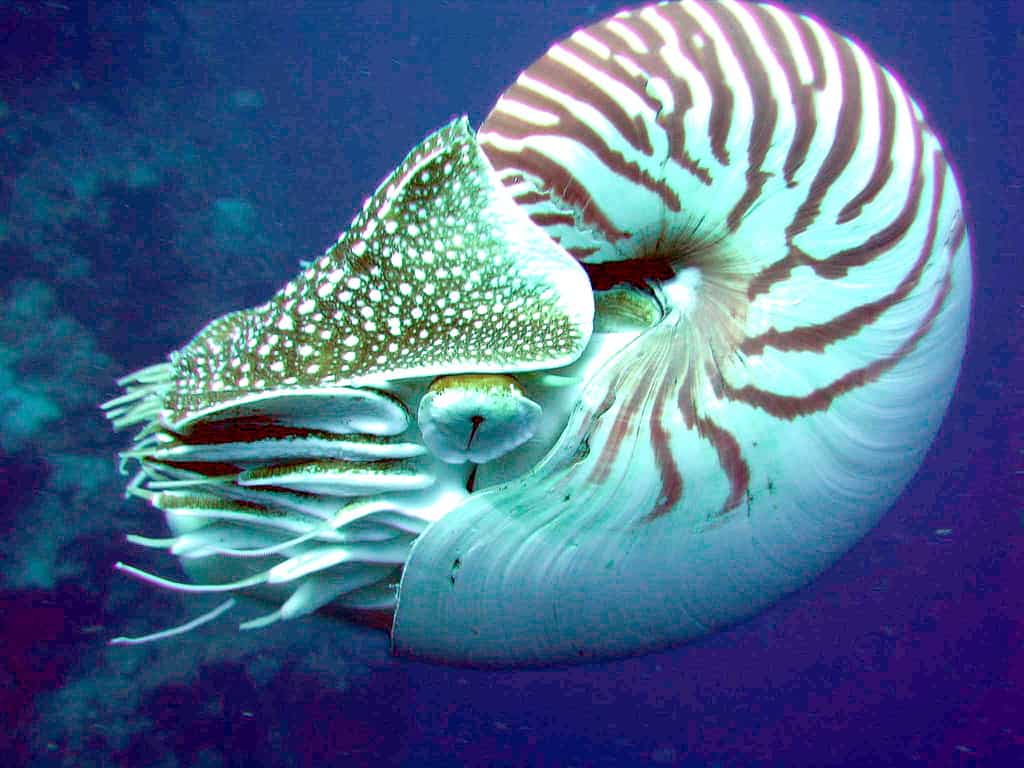
The nautilus can pull smaller aquatic animals into its sharp beak and eat them partly thanks to its many tentacles.
©Profberger at English Wikipedia, CC BY-SA 3.0 <http://creativecommons.org/licenses/by-sa/3.0/>, via Wikimedia Commons – License
Switching gears from the diverse worms, we’ll move on to a type of animal with no bones consisting of nine species: the nautilus. These strange-looking mollusks are cephalopods, closely related to squids, octopuses, and cuttlefish. They’re ancient animals that have existed for around 500 million years!
Like most other mollusks, nautiluses have soft bodies that live in large, curved, hard shells for protection. Their shells have several chambers–the animal lives in the largest chamber, while the others are used mainly for transportation via jet propulsion.
By sucking water into the smaller chambers and then forcefully pushing it out, the nautilus can propel itself across the ocean in search of its next meal: usually small fish, crabs, or lobsters. They can eat other animals with hard shells with the help of their sharp-toothed beaks and sensitive yet strong tentacles.
9. Octopuses and Squids
Octopuses and squids collectively make up the Coleoidea subclass of cephalopods. Other cephalopods, like the nautilus, have shells, octopuses, and squids (and cuttlefish, by extension) with soft, shell-less bodies. In total, around 900 unique species exist.
Interestingly, although these animals are technically invertebrates and largely lack bones, they possess one small, hard structure called a cuttlebone or gladius, which typically lies within the mantle. It is generally composed of chitin or carbonate, and its purpose is for buoyancy, support, and as an attachment point for the animal’s muscles.
Notably, octopuses and squids are among the most intelligent invertebrates. In particular, studies have shown octopuses to be capable of solving mazes and puzzles and being adept escape artists.
10. Horseshoe Crabs

Beneath the horseshoe crab’s hard carapace is its soft body with two antennae, a pair of jaws, and six paired appendages.
©SandraG/Shutterstock.com
Another small yet important group of invertebrates are the horseshoe crabs, of which there are just a few known species. Although they resemble crustaceans, they’re not closely related to crabs. They’re actually more akin to arachnids like scorpions and spiders. A large, hard carapace protects their bodies despite lacking internal bones.
Amazingly, these animals have existed for over 400 million years! The oldest variety, Lunataspis, was discovered in 2008 and is estimated to be 450 million years old.
11. Jellyfish
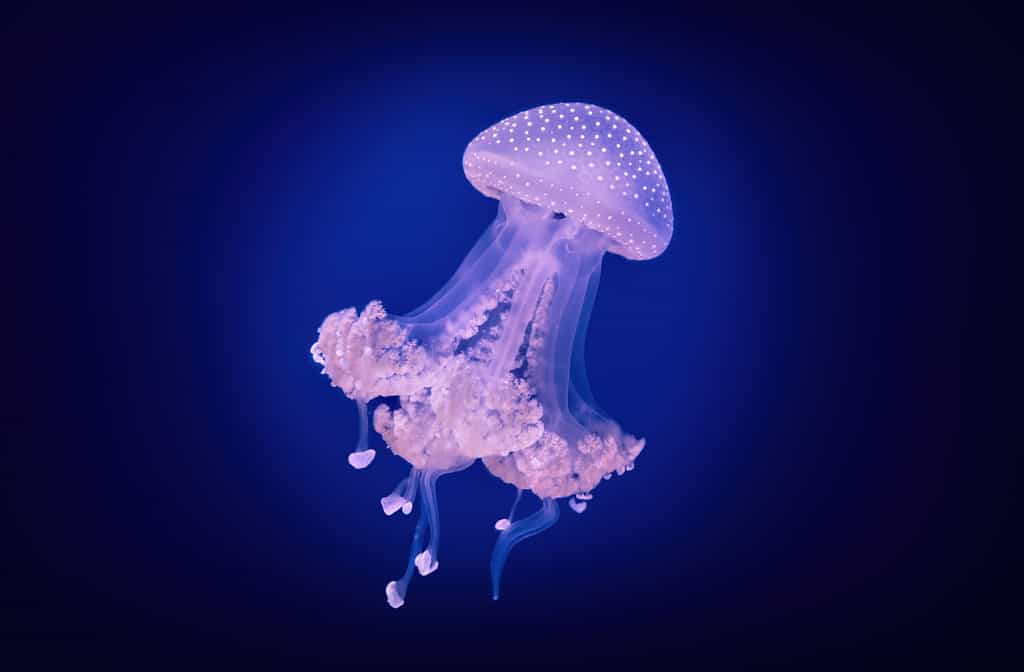
Jellyfish pulsate their large, bell-shaped bodies to move through the water as their tentacles trail behind them.
©Digitalphaser/Shutterstock.com
One of the more apparent animals without bones on our list is the jellyfish, which has over 2,000 unique species worldwide. These bizarre-looking creatures are aquatic, generally marine-dwelling animals with large bell or umbrella-shaped bodies with long, trailing tentacles. Many species’ tentacles have stinging cells or cnidocytes that they can use for defense. By pulsating or undulating the large bell-shaped portion of its body, a jellyfish can propel itself through the ocean water rather mesmerizingly.
Interestingly, the life cycle of a jellyfish is quite complex, though it consists of just two main phases: medusa and polyp. They can reproduce both sexually and asexually. Depending on the species, a jellyfish can live for over a year and a half in ideal conditions.
The photo featured at the top of this post is © Profberger at English Wikipedia, CC BY-SA 3.0
Thank you for reading! Have some feedback for us? Contact the AZ Animals editorial team.




